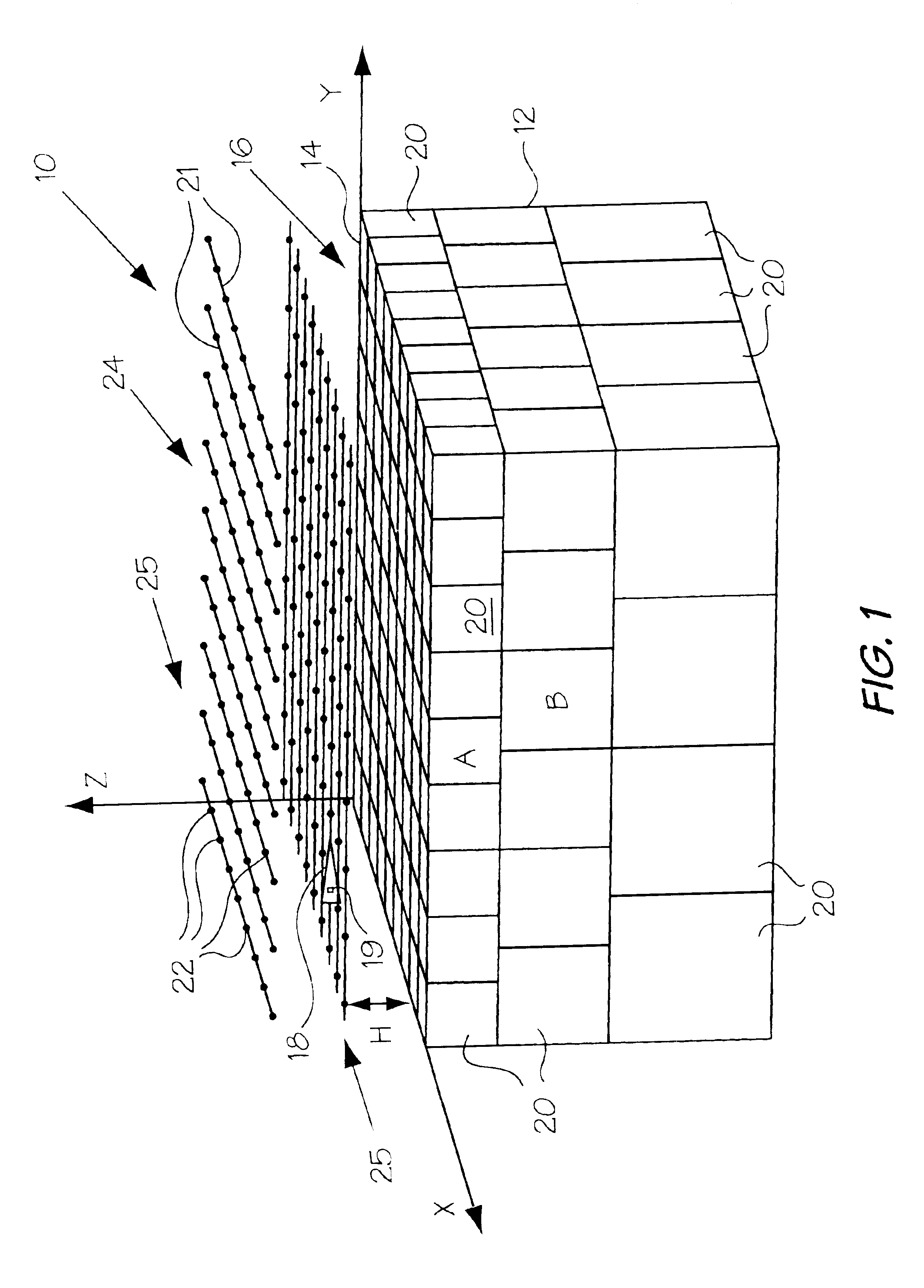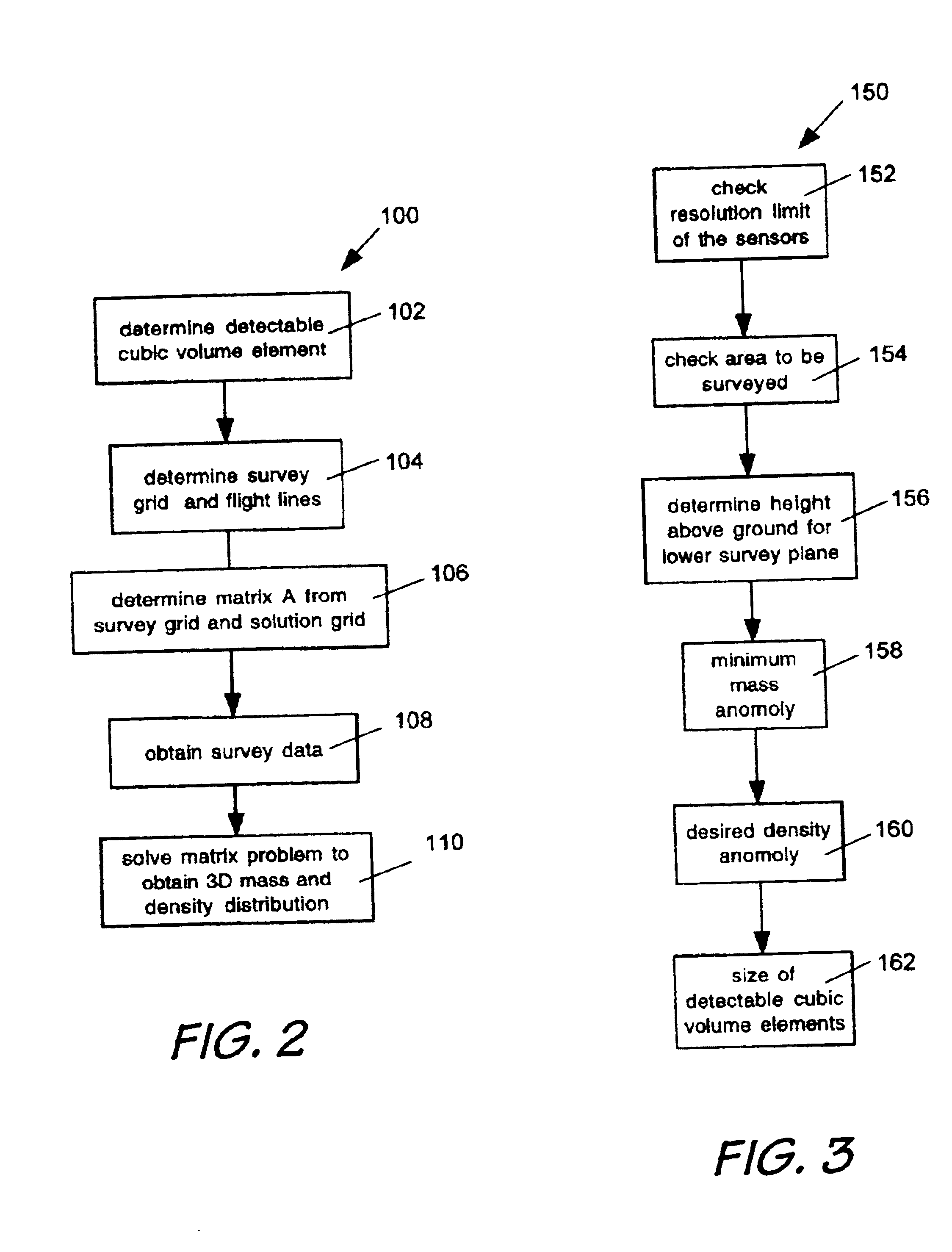System and method for surveying underground density distributions
a density distribution and density distribution technology, applied in the field of geophysical surveying, can solve the problems of large amount of computation, difficult problem, and inability to practicably determine variations at smaller scales
- Summary
- Abstract
- Description
- Claims
- Application Information
AI Technical Summary
Problems solved by technology
Method used
Image
Examples
Embodiment Construction
[0048]FIGS. 1 and 2 illustrate a physical survey system 10 (FIG. 1) and the general process steps 100 of the survey method (FIG. 2) of the present invention. The survey method is used to determine the three dimensional density structure of the subsurface material 12 below a survey area 14. Survey vehicles 18 (one shown-FIG. 1) travel over the survey area 14, which overlies a three-dimensional solution volume 16. The three-dimensional density structure of the region within the solution volume 16 is determined from data obtained from gravitational sensors 19 located on a survey vehicle 18 which traverses predetermined flight lines 21. The survey vehicle 18 obtains gravitational data at observation points 22 within a survey grid 24 which typically consists of a plurality of observation planes 25. It should be noted that the area covered by the survey grid 24 should be similar to the survey area 14 overlying the solution volume 16.
[0049]The solution volume 16 shown in FIG. 1 consists of...
PUM
 Login to View More
Login to View More Abstract
Description
Claims
Application Information
 Login to View More
Login to View More - R&D
- Intellectual Property
- Life Sciences
- Materials
- Tech Scout
- Unparalleled Data Quality
- Higher Quality Content
- 60% Fewer Hallucinations
Browse by: Latest US Patents, China's latest patents, Technical Efficacy Thesaurus, Application Domain, Technology Topic, Popular Technical Reports.
© 2025 PatSnap. All rights reserved.Legal|Privacy policy|Modern Slavery Act Transparency Statement|Sitemap|About US| Contact US: help@patsnap.com



